Steven Smith — a photographer who grew up in the Church of Jesus Christ of Latter Day Saints, the Mormon church, and whom I’ve known a long time — sent me a book he’s just published. It’s called Waiting Out the Latter Days. It’s almost entirely photographs which I love but am incapable of reading, so I asked him to explain it a little. His full answer is in the following post but his first answer was:
“I have been thinking about how to talk about this book but it is so personal, I get self-conscious. The book has a catchy, almost clichéd, title but I mean the phrase in every sense possible. The Mormons viewed the nuclear apocalypse as the Bible’s promise of the end of days. That was when Jesus was going to come back and take every one to heaven. I did this book because I was so curious to investigate the world that did not meet its armageddon.”
– Ann
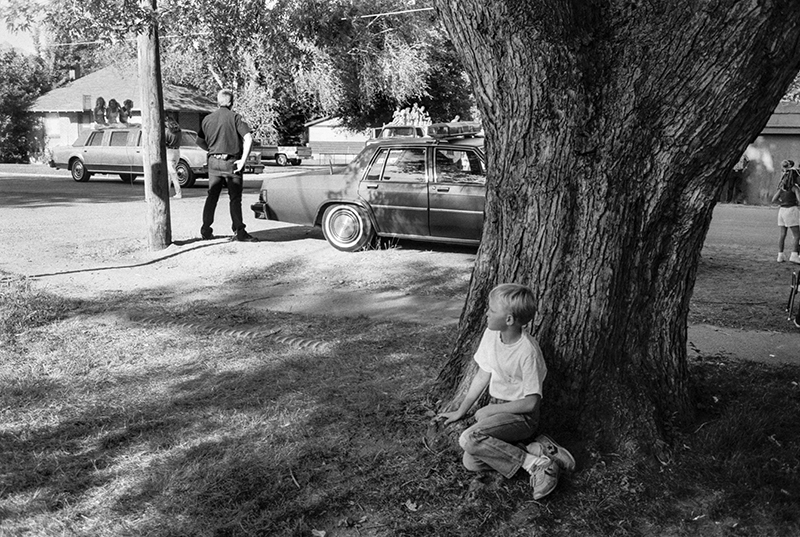 Fourth grade was the last time we practiced diving under our desks and turning our faces away from the windows. In middle school, we were sent down into the basement from time to time for what our teachers told us were earthquake preparedness drills. We knew the drills were for atomic bombs. The looming nuclear attacks were all part of God’s plan. Our job was to remain faithful and wait.
Fourth grade was the last time we practiced diving under our desks and turning our faces away from the windows. In middle school, we were sent down into the basement from time to time for what our teachers told us were earthquake preparedness drills. We knew the drills were for atomic bombs. The looming nuclear attacks were all part of God’s plan. Our job was to remain faithful and wait.
While waiting, we saw the TV programs on Nuclear Armageddon and When the Russians Invade that aired right before Saturday morning cartoons. Then in Sunday school, we found out how Satan and the Communists were conspiring together against us. The Cold War was escalating, the Russians were going to attack soon, and we had better stop touching ourselves. I didn’t really have any hopes or dreams then. I just wanted to live long enough to get married and have sex before God called us Home.
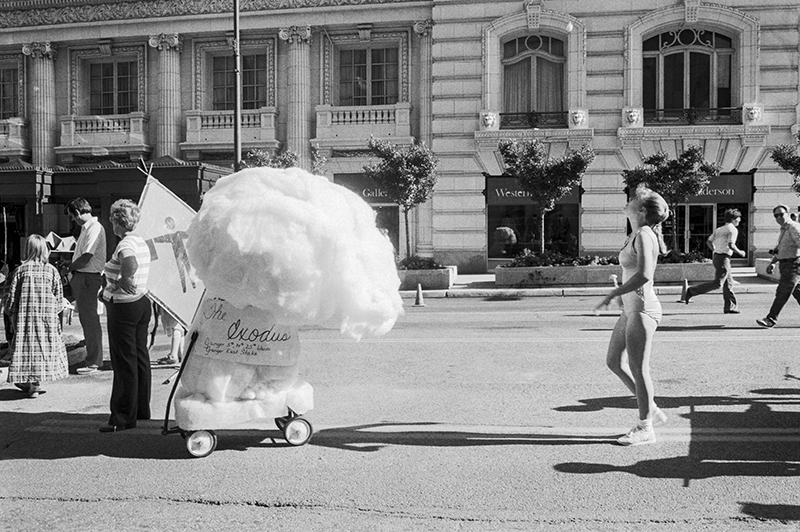 When I was growing up, my father said that the Mormons were all just waiting around to be called home. I wanted to leave the place where everyone was waiting to die but I had no means to do it. I decided to stay in state for college and try to make something of myself, and then get out of Utah and live for what ever time I had remaining.
When I was growing up, my father said that the Mormons were all just waiting around to be called home. I wanted to leave the place where everyone was waiting to die but I had no means to do it. I decided to stay in state for college and try to make something of myself, and then get out of Utah and live for what ever time I had remaining.
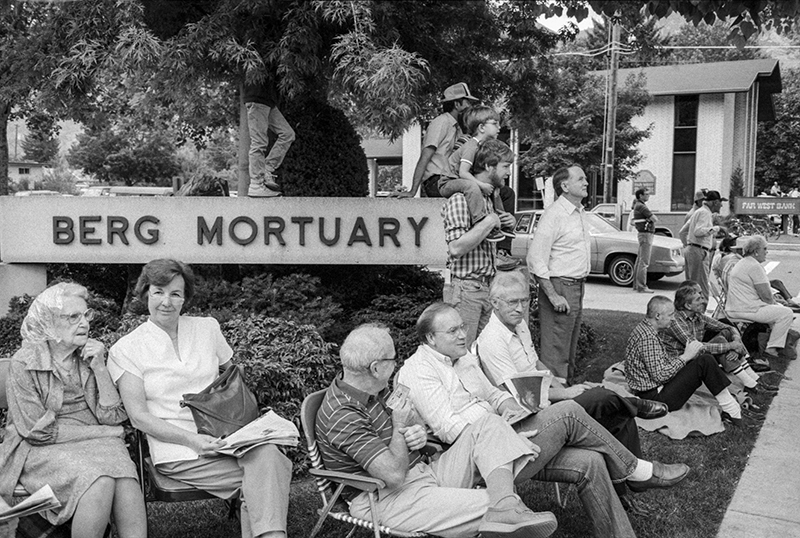 While I was in college, I found photography and started making pictures of life in Utah to make fun of, celebrate and try to understand my fellow citizens. I latched onto the self-deprecating sense of humor I saw in the photos of Garry Winograd. He was amazing — he could make a photo that was unflattering, real, and yet empathetic. With these Utah photos, I applied to graduate school at Yale. Luckily got in and promptly was shot down in a most dramatic fashion. I moved on to explore other ways of making work and put Utah behind me. At the same time, the Berlin Wall came down and the nuclear apocalypse came down with it. It was a rare breath of hope but I did not think about Utah then. I was still out in the real world and smitten with it.
While I was in college, I found photography and started making pictures of life in Utah to make fun of, celebrate and try to understand my fellow citizens. I latched onto the self-deprecating sense of humor I saw in the photos of Garry Winograd. He was amazing — he could make a photo that was unflattering, real, and yet empathetic. With these Utah photos, I applied to graduate school at Yale. Luckily got in and promptly was shot down in a most dramatic fashion. I moved on to explore other ways of making work and put Utah behind me. At the same time, the Berlin Wall came down and the nuclear apocalypse came down with it. It was a rare breath of hope but I did not think about Utah then. I was still out in the real world and smitten with it.
A while ago, one of my former students said that he liked the early Utah work and he wanted to publish a book of it. I was slightly flattered and perplexed and said, “Great,” and eventually I started going back through work that was 25 years old. Garry Winogrand and Henry Wessel Jr. both have a photographic process based on shooting and then letting the film sit undeveloped for years. The idea is to forget what inspired you to make the photos and look at them more objectively. It is a really great system because understanding what you have made, especially in photography, is very hard. Having 25 years to go back over my contact sheets was like visiting a former self. And now I was seeing the photographs more clearly and through the glass of history.
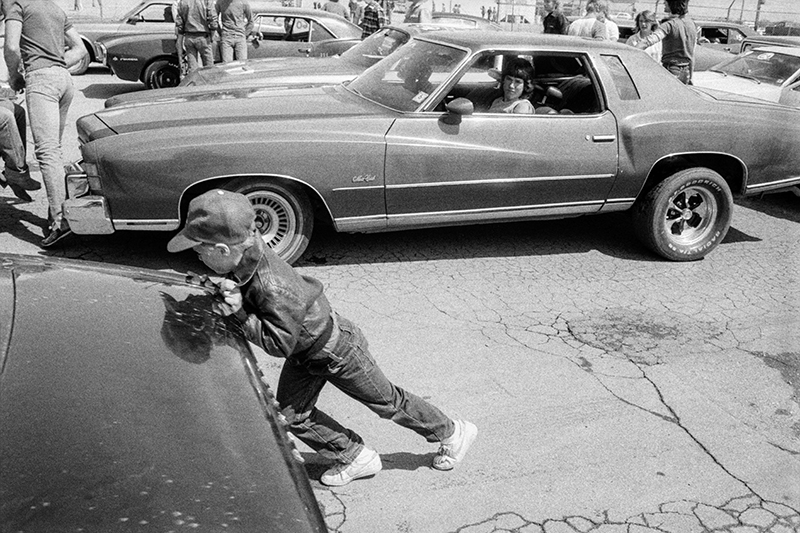 I edited the photos into a rough book and it looked interesting but needed more images. Back in graduate school when I had given up the project, I felt like it had been just getting going and I felt bad about giving up on it so easily. I became excited by the prospect of starting again and said hell with smart career moves and started photographing life in Utah. I had a blast making work in Utah again.
I edited the photos into a rough book and it looked interesting but needed more images. Back in graduate school when I had given up the project, I felt like it had been just getting going and I felt bad about giving up on it so easily. I became excited by the prospect of starting again and said hell with smart career moves and started photographing life in Utah. I had a blast making work in Utah again.
When putting the book sequence together I was worried about including recent work that was made over the past two summers but it was wild how it blended with the old work. I just let them be and didn’t worry about the difference. I wanted to go back and shoot again to see if I could learn or realize something about myself or the culture that I was raised in. I knew that this type of epiphany or comparison would be impossible to photograph. I just wanted to go back and visit my self as a young man and be kind and understanding to my former self.
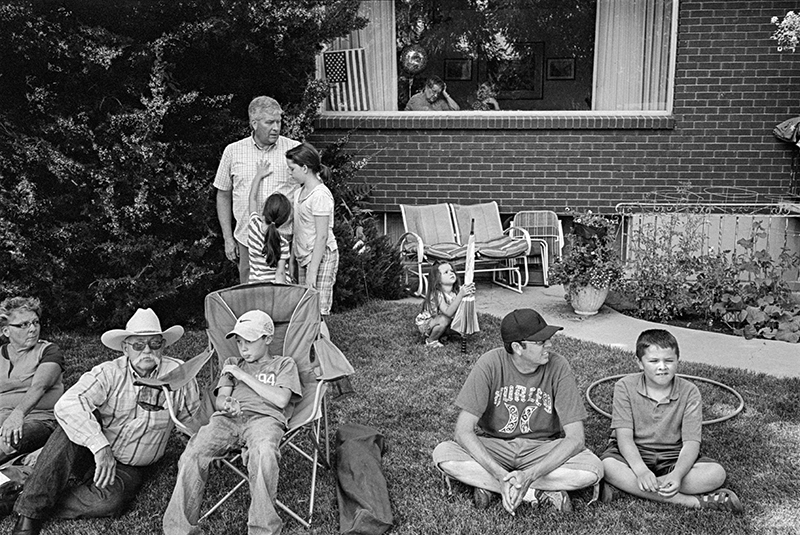 I wanted to engage in a critique again but now that I am older, I am perhaps not as angry at the place that shaped me. I just use my repressed feeling of loathing and my ingrained sense of politeness to explore and hopefully empathize.
I wanted to engage in a critique again but now that I am older, I am perhaps not as angry at the place that shaped me. I just use my repressed feeling of loathing and my ingrained sense of politeness to explore and hopefully empathize.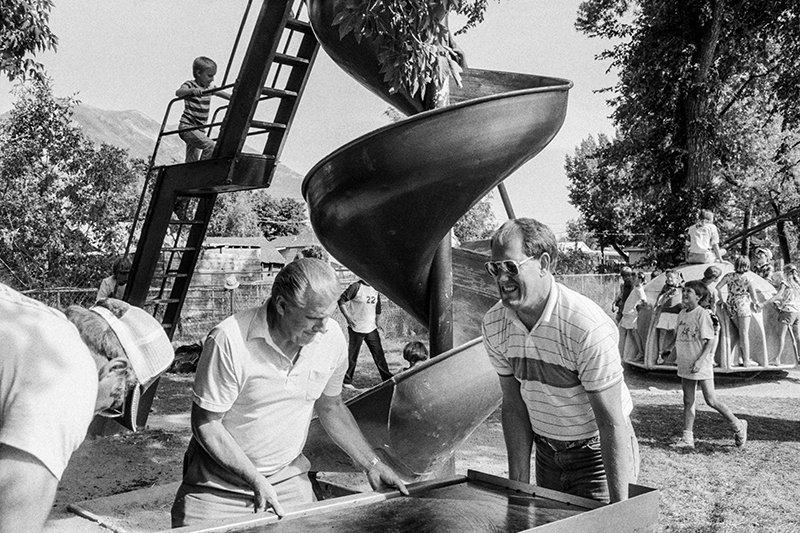 On the east coast, folks’ faces look like they are thinking and often burdened – they have tight faces and restrained-looking eyes. The look of a typical Utahn was blond hair, wondering eyes and a slack face. They didn’t look stressed; everyone was secure knowing that they were going to some high level of heaven and that everything would eventually be all right. This is the look I was after but it is so hard to photograph, and it is an opinion that is mean as hell to assert — but here I am.
On the east coast, folks’ faces look like they are thinking and often burdened – they have tight faces and restrained-looking eyes. The look of a typical Utahn was blond hair, wondering eyes and a slack face. They didn’t look stressed; everyone was secure knowing that they were going to some high level of heaven and that everything would eventually be all right. This is the look I was after but it is so hard to photograph, and it is an opinion that is mean as hell to assert — but here I am.
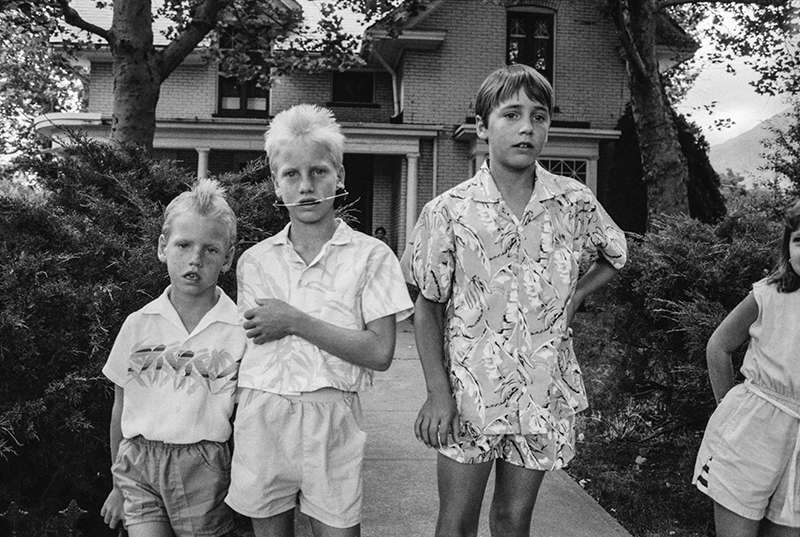 The early work seeks to connect the cold war pessimism with the eternal security of Mormon heaven. When I photographed again the past two summers after a 23-year hiatus, I noticed that the folks were even more relaxed and didn’t have the look of self-satisfied non-thinking. Utah now has a brain surplus: the Mormon young folks who went to school are dying to live in the rarified air of Utah and will work for sub standard wages at decent mid-level IT jobs just for the privilege of living there. That could be the title of the next book.
The early work seeks to connect the cold war pessimism with the eternal security of Mormon heaven. When I photographed again the past two summers after a 23-year hiatus, I noticed that the folks were even more relaxed and didn’t have the look of self-satisfied non-thinking. Utah now has a brain surplus: the Mormon young folks who went to school are dying to live in the rarified air of Utah and will work for sub standard wages at decent mid-level IT jobs just for the privilege of living there. That could be the title of the next book.
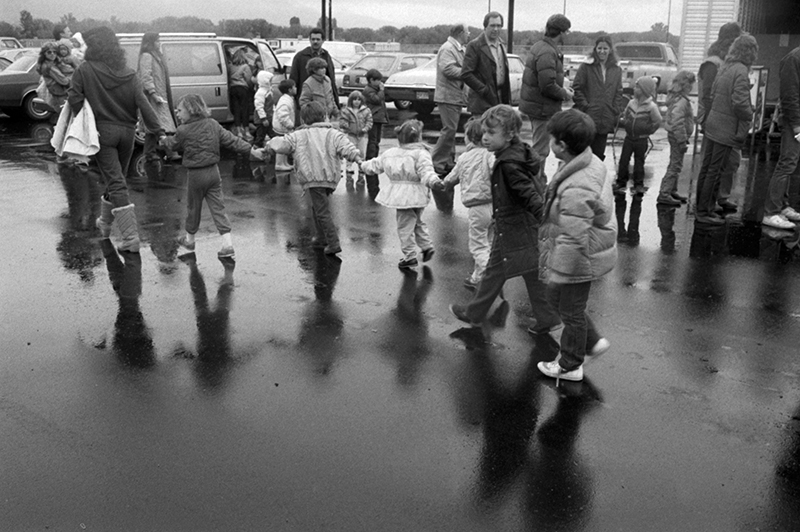 I like photography of the real world. It is a great method for making images that capture and confound. At best an artist/photographer can be only partially in control of what the image might mean to others. I like this ambiguity — it feels like herding cats and in it there are accidents, gifts and mysteries that come to you.
I like photography of the real world. It is a great method for making images that capture and confound. At best an artist/photographer can be only partially in control of what the image might mean to others. I like this ambiguity — it feels like herding cats and in it there are accidents, gifts and mysteries that come to you.
____
Steven B. Smith is a professor of photography at the Rhode Island School of Design.
____
If you’re interested, here’s Garry Winograd; and here’s Henry Wessel, Jr.
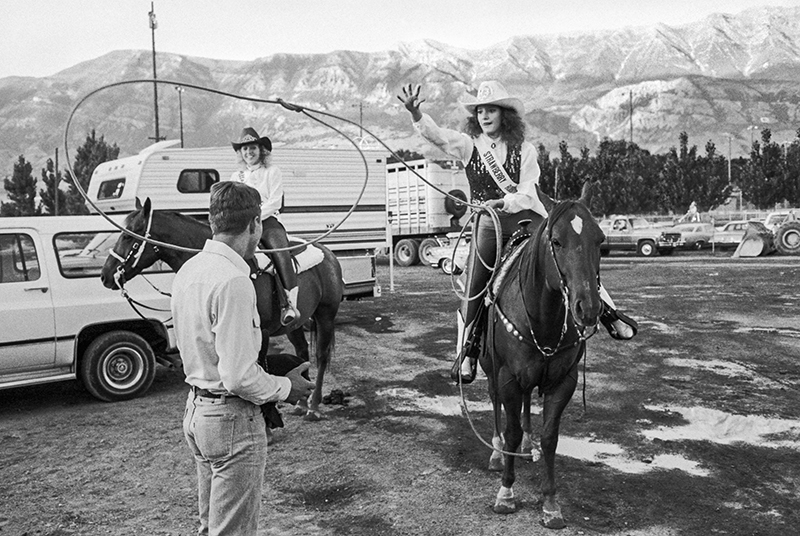
One thought on “Guest Post: Waiting Out the Latter Days”
Comments are closed.